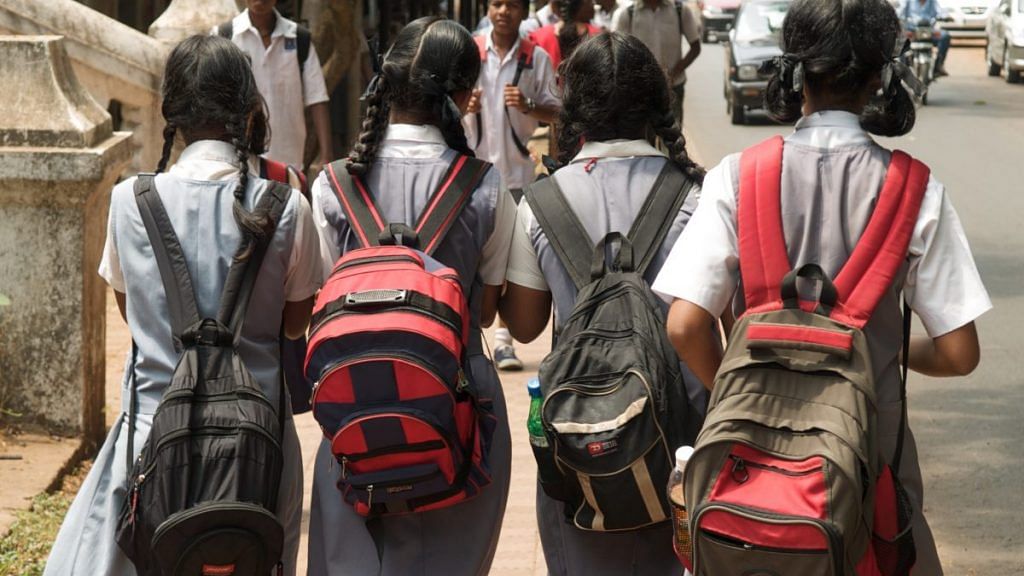In less than a week since Prime Minister Narendra Modi’s cabinet took charge, the draft National Education Policy has already run into controversy over a clause of ‘mandatory Hindi lessons’ for non-Hindi speaking states.
Education has often been a victim of politicisation, and has never got due importance as a policy. The consequences are there for everyone to see.
What first Modi govt did
The previous Narendra Modi-led NDA government did manage to take some initiatives, especially in the last three years, to address persisting problems. In February this year, it had announced that an integrated four-year Bachelor in Education (B.Ed) course would be launched in 2020.
Such a step has the potential to eliminate dubious and uncertified teacher training colleges, encouraging only those who are keen to pursue teaching as a profession.
The first Modi government also successfully moved an amendment to the Right to Education Act, giving no less than 11 lakh teachers time till 2019 to acquire the prescribed minimum qualification.
Also read: Rahul Gandhi’s interest-free education loan can’t help much if banks are student-unfriendly
A portal called ‘DIKSHA’ was launched in 2016 to provide scientific training to teachers. Similarly, to facilitate better coordination between Centre, states and funding agencies, ‘Shaala Sarathi’ portal was launched in 2017.
To do away with segmented approach to school education, a comprehensive centrally sponsored scheme, Samagra Shiksha, was launched, which replaced segmented schemes like Sarva Shiksha Abhiyan, Madhyamik Shiksha Abhiyan and Teacher Education. In a first, school education was treated holistically, from pre-school to Class 12.
Don’t need a new policy
The previous government spent a lot of time in formulating a new education policy, yet could not come up with one.
In fact, there is no need for a new education policy. Correct diagnosis and timely remedial measures are enough to ensure education gets its due in policy-making.
The new Narendra Modi government must get down to business to make things happen on the ground.
First, take forward the initiatives that were launched in the last three years to their logical conclusion. Second, launch fresh, target-specific initiatives in the sector.
Teachers must be at the centre of education reforms. The decision to launch an integrated B.Ed course must be implemented in letter and spirit so that fraudulent training colleges are forced to shut shop.
Centralisation of teacher recruitment process can control malpractices like salary disparity, preferential allocation of teachers, skewed quality checks. States like Tamil Nadu have done commendable work in this regard and can be role models for others.
Also read: Finland has found the most effective method to counter fake news – education
‘DIKSHA’ portal has enormous potential, but needs to be strengthened and leveraged for in-service training. It can be used for maintaining teaching-related data. Maharashtra and Andhra Pradesh have used the portal effectively, and their methods can be replicated across the country.
Technology can be a game-changer. It can transform the delivery of education and make experiential learning an enjoyable experience. Maharashtra, Karnataka, Kerala and Andhra Pradesh are already doing that.
Chhattisgarh and Andhra Pradesh have shown how technology can be used to ensure attendance of teachers. Central government can incentivise the use of technology in classrooms and encourage states to learn from each other.
One model can’t work for all
India is a diverse country and the same approach to education cannot work in all the states.
Each state requires a different set of intervention in terms of teachers, curriculum and pedagogy. Practical action plans need to be worked out for each state in consultation with all the stakeholders wherein what needs to be done, how it will be done, who will do it and by when it will be done are clearly outlined. The National Achievement Survey (NAS) done in November 2017 can come handy in preparing such plans. Implementation of these plans will need to be facilitated and monitored by the central government.
Also read: Ex-IAS officer’s take on 6 key economic challenges new Modi govt faces
Encouragement provided to the NGOs has had the desired impact over the last few years. This partnership has increased the reach of education to remote corners of the country, and must be nurtured.
A number of other issues related to curriculum, vocational training, educating the girl child, enrolment of children with special needs, and school dropout rate need to be addressed. There is a need for greater emphasis on value-based education and the ridiculous marking system should be corrected.
The steps taken by the Centre in the last few years have given us hope that school education can be transformed. The new Modi government must get its act together and prioritise education.
The author is a retired civil servant and former secretary in the government of India. Views are personal.
